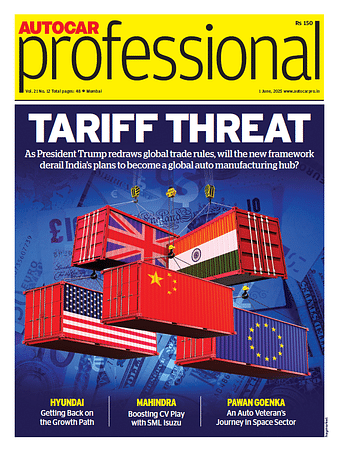S&P Global cuts India EV forecast from 22% to 18.5% by 2030
The adjustment in S&P’s EV forecast is attributed to several factors, including slower-than-anticipated adoption in the electric passenger vehicle segment.
As the global automotive landscape continues to evolve, the focus on sustainable mobility solutions has never been more pronounced. Recently, S&P Global Mobility adjusted its electric vehicle (EV) forecast for India, reducing the expected market penetration from 22% to 18.5% by 2030. This shift signals a nuanced understanding of the challenges and opportunities that lie ahead, particularly the rise of hybrid technologies in the Indian automotive sector.
The adjustment in S&P’s EV forecast is attributed to several factors, including slower-than-anticipated adoption in the electric passenger vehicle segment, challenges related to charging infrastructure, selective state incentives favouring hybrids, etc. These insights highlight the importance of aligning policy frameworks with consumer preferences to accelerate the adoption of EVs.
“Powertrain pluralism is the new buzzword in mobility,” said Puneet Gupta, Director of India and ASEAN Automotive Market at S&P Global Mobility. This term captures the growing acceptance of diverse powertrains aimed at decarbonizing the Indian market. While the forecast adjustment reflects a space for hybrids, Gupta emphasizes that EVs remain a critical solution for the future.
He notes that India is charting its unique course in the electrification journey. Homegrown manufacturers like Tata Motors and Mahindra are likely to focus on a singular path of electrification rather than adopting a “jack of all trades, master of none” approach. This strategic focus is essential for catering to the broad consumer spectrum in India, ranging from budget-friendly vehicles to luxury offerings.
India stands out as a growing market in a landscape where many major automotive regions are witnessing decline. “The space for various technologies will continue to expand, and companies must pivot away from traditional fuels at the right moment,” Gupta explains. As consumer demand shifts, it is expected that manufacturers will gradually transition away from diesel and compressed natural gas (CNG) as viable fuel sources.
While CNG has emerged as a transitional fuel, particularly in the mini-car segment. However, the development of efficient hybrid technologies by 2028 could entice consumers to move away from CNG altogether. Gupta indicates that plug-in hybrid electric vehicles (PHEVs), especially those resulting from partnerships with Chinese OEMs, are gaining traction and could replicate the success seen in China, where PHEVs have experienced rapid growth.
As the penetration of alternative powertrains increases, the demand for traditional fuels like gasoline and diesel is poised to decline. Battery-electric vehicles (BEVs) are leading this shift, particularly in the two- and three-wheeler segments, significantly impacting gasoline demand.
Atul Arya, Senior Vice President and Chief Energy Strategist at S&P Global Commodity Insights, emphasizes the disparities in EV adoption rates across different markets. “China is leading the charge, with over 60% of new car sales last month being EVs,” Arya notes. In contrast, the U.S. market lags behind at less than 10%.
“For the Indian context I would say there’s the two-wheeler market which can be electrified easily then there’s the mass transit market like buses. In other segments, cost is a big issue and therefore it’s very interesting that the hybrids are picking up. Because they give the benefit of everything. No need to worry about the infrastructure but they give the benefit of efficiency. When a very mature market like the US is seeing difficulty, I’m not surprised that India is seeing a similar trajectory,” he explains.
RELATED ARTICLES
Investigation confirms discrepancies at Ramkrishna Forgings, company to take corrective action
Automotive component supplier finds errors in production recording led to material misstatement across two financial yea...
Tractor Sales Maintain High Single-Digit Growth in May
Leading tractor manufacturers, who had earlier projected high single-digit growth for 2025-26, said the early onset of ...
Hyundai Motor India Foundation Supports Emergency Healthcare Services in Pune
As part of its Sparsh Sanjeevani program, HMIF supports emergency medical services in Takve and Yelse villages with the ...





 20 Sep 2024
20 Sep 2024
 6957 Views
6957 Views





 Shahkar Abidi
Shahkar Abidi


 Yukta Mudgal
Yukta Mudgal

 Sarthak Mahajan
Sarthak Mahajan

